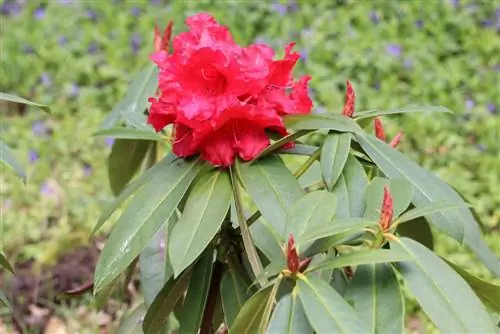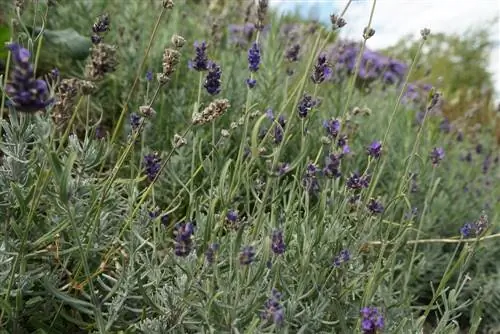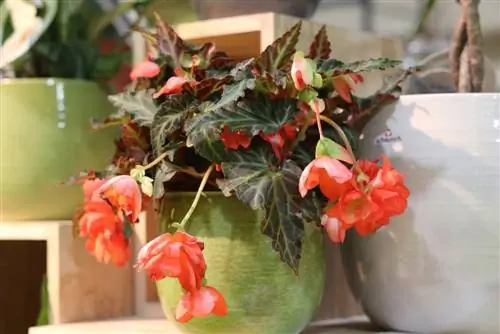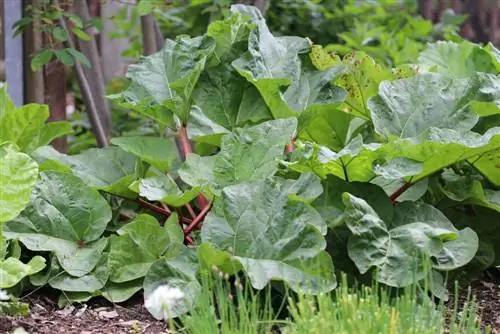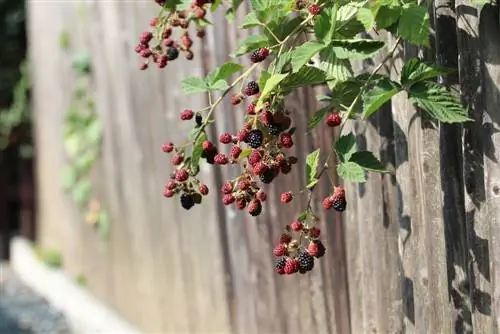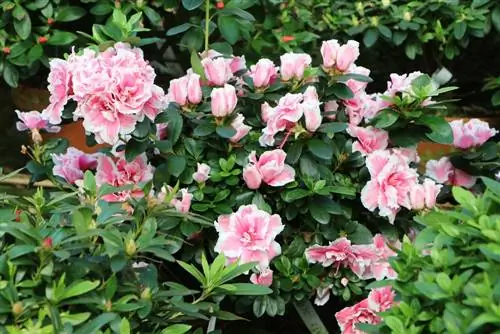- Author admin [email protected].
- Public 2023-12-17 03:39.
- Last modified 2025-01-24 12:45.
Finding the right location for a rhododendron is difficult. The plants are extremely demanding when it comes to location. Therefore, you should carefully check the location and soil before purchasing.
Location
Choosing the right location is extremely important for rhododendrons, as the plants do not accept every location. If the location is chosen incorrectly, they will take care of it and the sea of flowers will not appear. Therefore, you should meet the following requirements of rhododendrons:
Light conditions
Rhododendrons are not typical sun worshipers. Although they tolerate shady locations, this comes at the expense of flowering. Under no circumstances should they be exposed to the blazing midday sun. Therefore, you should choose a partially shaded location for the plant. The shadow can be artificial or natural. Examples of artificial shade sources for rhododendrons are
- a house wall
- a garden wall
- a wooden garden house
Natural shade providers are deciduous or coniferous trees that have the following properties:
- light (translucent, light shadow)
- deeprooted
The Scots pine (Pinus sylvestris), for example, has these properties. The tree has long, thin needles and therefore casts a light shadow. Its roots are sparsely branched and have deep roots. This means they do not come into competition with the shallow roots of the rhododendron.
Tip:
Since rhododendrons are long-lived plants, you should keep their growth in mind when choosing the shade provider. Because over the years, the shade provider can take away too much light from the rhododendrons.
Weather conditions
In addition to the ideal lighting conditions, the location must also meet other plant requirements. Since rhododendrons don't like wind, the location should be protected from the wind. This is especially true before dry easterly winds in winter.
Floor
Choosing the right location in the garden is only half the battle with rhododendrons. The ornamental shrubs also place special demands on the soil. If these are not met, the plants will grow poorly and there will be no sea of flowers. To suit rhododendrons when it comes to soil, you should check the following properties:
- Soil type
- Permeability
- Soil moisture
- Nutrients
- Soil type
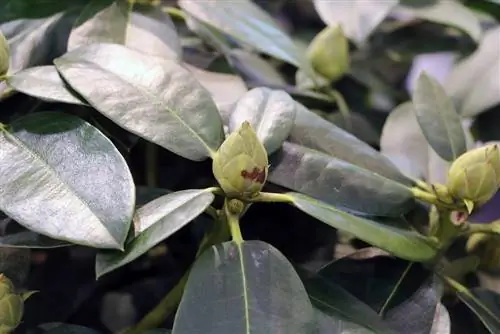
When it comes to soil type, rhododendrons need to be “very loose” so that the roots of the shallow-rooted plants can spread well. In the garden, the following types of soil are called loose:
- sandy
- rocky
- gravelly
Rhododendrons do not tolerate heavy (clay) soils. If you still don't want to do without the plants, then the soil needs to be improved with sand. Alternatively, you can replace the excavation with rhododendron soil. Sandy soils can be used with
- Leaf compost
- Bark humus
- rotten cow dung
be improved.
Tip:
The pH value of the soil is ideally in the range from slightly acidic to acidic. This corresponds to a value of 4 to 5.5. The plants therefore cannot cope with calcareous soils that have a higher pH value.
Permeability
Since waterlogging is the biggest problem for the rhododendron in terms of care and weather, the soil should be permeable so that excess water can drain into deeper soil layers. In loose soils, permeability usually occurs naturally. To be on the safe side, you can also create a drainage layer in the planting hole. If you use gravel for this, make sure that it is lime-free.
Soil moisture
The optimal soil moisture for rhododendrons is
- fresh
- moderately humid
“Fresh” means that no water runs out when the soil is compressed, but the soil still feels moist. The soil is too moist if it still releases water when the soil is compressed.
Nutrients
So that the rhododendron can develop well right from the start, you should give it a nutrient-rich starting aid. Suitable for this:
- humus coniferous or leaf compost
- Peat
- Moorbed soil
- These are added to the garden soil as filling material.
Plant Neighbors
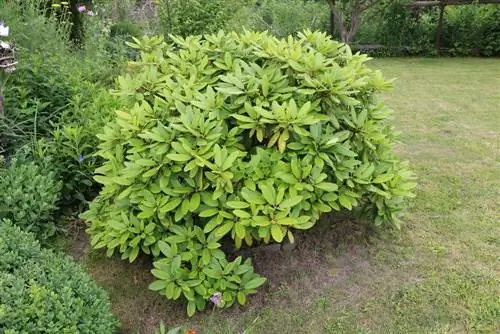
Since rhododendrons have shallow roots, plants whose roots also spread just below the surface of the earth should not be chosen as neighbors. Examples ofbad neighbors include:
- Beech
- Birch
- Maple
- Spruce
Good neighbors are for example:
- Heather herbs
- Lavender
- Skimmie
Tip:
For the neighborhood to work, the planting distance should be at least 100 centimeters.
Exceptions
If you realize that your garden is not suitable for a rhododendron in terms of soil and location, then special species may be able to help you. Because these are more compatible with different criteria:
- INKARHO rhododendrons can also cope with a higher pH value.
- Yakusimanum hybrids tolerate a sunny location.

